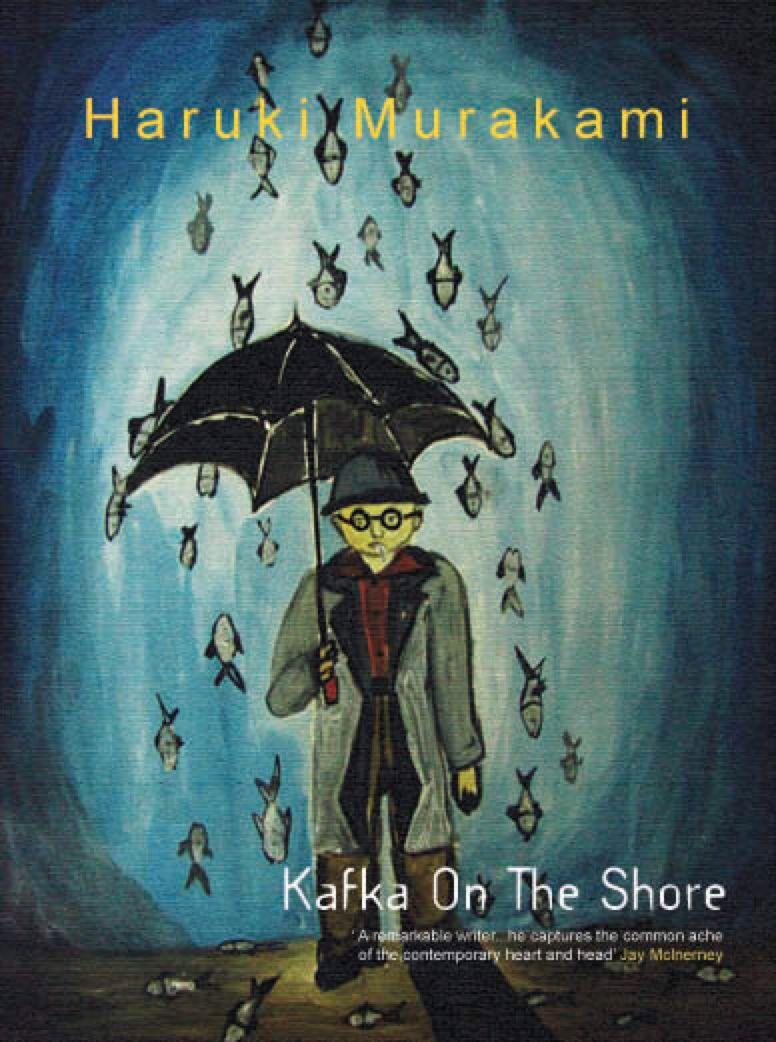Haruki Murakami‘s “dreams and reality“>Kafka on the Shore” stands as a compelling exploration of the intricate interplay between dreams and reality, weaving a narrative that challenges conventional perceptions of both realms. This novel, rich in symbolism and surrealism, invites readers into a world where the boundaries between the conscious and the subconscious blur, prompting a deeper examination of the human psyche. Through its complex characters and intertwining storylines, Murakami crafts a tapestry that not only reflects the enigmatic nature of dreams but also questions the very fabric of reality. This article delves into the mechanisms by which “Kafka on the Shore” navigates these themes, analyzing how the novel’s structure, motifs, and character arcs contribute to a broader understanding of the fluid relationship between our waking lives and the dreamscapes that haunt them.
Interplay of Dreams and Reality in Kafka on the Shore
In Haruki Murakami’s novel, the boundaries between dreams and reality blur, creating a rich tapestry that challenges the reader’s perception. The narrative is woven with surreal elements that echo the inner landscapes of the characters, particularly Kafka Tamura and Nakata. These elements are not mere diversions but serve as crucial components that propel the story forward. Murakami uses the dream sequences to delve into the subconscious minds of his characters, revealing their deepest fears and desires. This interplay between the conscious and unconscious world becomes a pivotal mechanism for character development, allowing readers to explore the depths of human psyche.
- Symbolic Dreams: Dreams in the novel often carry significant symbols that relate directly to the characters’ personal journeys, such as the recurring motif of the “labyrinth,” representing Kafka’s quest for identity.
- Reality as a Dream: Murakami questions the nature of reality itself, suggesting that what we perceive as real may merely be an extension of our dreams, or vice versa.
- Seamless Transitions: The seamless transition between dreams and reality in the narrative creates an immersive experience, urging readers to question their own understanding of what is real.
By intertwining dreams and reality, Murakami crafts a narrative that transcends traditional storytelling, inviting readers to engage with the text on a profound level. This exploration not only enriches the plot but also challenges the audience to reflect on their own perceptions of reality and the hidden layers of their dreams.

Symbolism and Its Role in Blurring Boundaries
In Kafka on the Shore, Haruki Murakami employs a rich tapestry of symbolism to blur the lines between the conscious and the subconscious, weaving a narrative that questions the boundaries of reality and dreams. The novel’s symbols serve as conduits, allowing characters and readers alike to traverse realms that defy conventional logic. For instance, the recurring imagery of cats, stones, and fish falling from the sky are not merely fantastical elements but rather profound symbols that invite introspection into the nature of existence and the fabric of reality.
- Cats: These creatures often represent a bridge between the known and the unknown, acting as guides through the metaphysical landscape of the story.
- Stones: They are emblematic of hidden truths and the weight of unresolved pasts, anchoring the characters in a world that is both tangible and intangible.
- Fish: The surreal imagery of fish falling from the sky challenges the natural order, prompting a reevaluation of what is possible within the confines of a dream-like reality.
By intertwining these symbols with the plot, Murakami not only blurs the boundaries between dreams and reality but also engages readers in a deeper exploration of the human psyche. This symbolic interplay creates a narrative that is both enigmatic and profoundly reflective, urging one to consider the fluidity of perception and the myriad ways in which reality can be construed.

Character Journeys Through the Subconscious Realm
In Haruki Murakami’s “Kafka on the Shore,” the subconscious serves as a labyrinthine realm where characters embark on profound psychological journeys. Murakami deftly intertwines elements of dreams and reality, allowing characters to traverse landscapes shaped by their inner thoughts and desires. Kafka Tamura, the novel’s protagonist, frequently oscillates between the tangible world and a dreamlike state, where his subconscious fears and aspirations manifest in surreal encounters. This exploration of the subconscious is not just a narrative device but a thematic core that underscores the complexity of human consciousness.
Key elements of these journeys include:
- Symbolic imagery: Murakami employs rich, symbolic imagery to represent the characters’ internal struggles and revelations.
- Interconnected narratives: The parallel stories of Kafka and Nakata highlight how the subconscious can weave disparate lives together.
- Fluid boundaries: The novel blurs the lines between dreams and reality, inviting readers to question the nature of their perceptions.
Through these elements, “Kafka on the Shore” becomes a tapestry of introspection, where the subconscious realm is as vivid and significant as the physical world. Murakami’s portrayal challenges the reader to reflect on the power of the mind and the hidden pathways it conceals.
Recommendations for Engaging with Murakamis Dreamscapes
Engaging with the intricate dreamscapes woven by Haruki Murakami in Kafka on the Shore requires a keen eye for detail and a willingness to embrace ambiguity. To fully appreciate the novel’s exploration of dreams and reality, consider the following recommendations:
- Embrace Symbolism: Murakami’s work is rich with symbols that serve as gateways between the conscious and subconscious. Pay attention to recurring motifs, such as cats, music, and libraries, as they often reveal deeper meanings and connections.
- Accept Ambiguity: The boundaries between dreams and reality in Murakami’s narrative are deliberately blurred. Rather than seeking definitive answers, allow yourself to dwell in the uncertainty, understanding that this ambiguity is central to the novel’s thematic core.
- Focus on Character Interactions: The interactions between characters often mirror the interplay between dreams and reality. Observe how characters like Kafka and Nakata navigate their respective worlds, and consider how their journeys reflect the novel’s exploration of identity and destiny.
By approaching Murakami’s dreamscapes with an open mind and a willingness to explore the unknown, readers can uncover the layers of meaning that lie beneath the surface of Kafka on the Shore.
